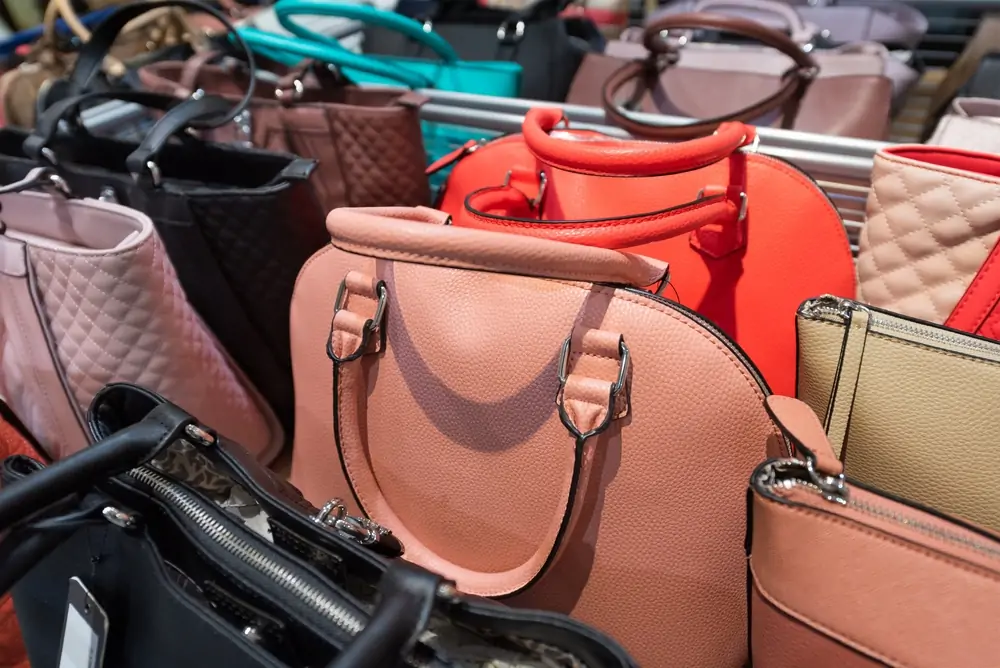
The line between luxury goods and fakes has become increasingly blurred. In recent years, the counterfeit market has exploded. Buyers especially need to be aware of the booming industry, as it has become much harder to spot a fake. In many ways, the counterfeit market is no longer hiding on street corners or on the dark web; it’s out in plain sight. From social media “dupes” to influencer-endorsed knockoffs, fake designer handbags have become a booming economy worth billions. Here are 10 ways people are getting rich by illegally selling fake luxury handbags.
1. Selling “Replicas” on Private Telegram and WhatsApp Groups
Instead of public listings, sellers are moving their fake luxury operations into encrypted messaging apps like Telegram, Signal, and WhatsApp. These invite-only channels post limited “drops” of Louis Vuitton, Gucci, and Chanel replicas with photos that look identical to the real thing. Even payment methods are rather sketchy. Sellers ask for payments in crypto or via friends-and-family PayPal transfers to avoid chargebacks. This makes these sales nearly untraceable. But law enforcement is cracking down, since many scammers are stealing buyers’ money.
2. Using TikTok and Instagram “Dupe Culture”
Once upon a time, you didn’t draw attention to the fact that your bag was fake. You just quietly hoped that no one would notice or realize that you couldn’t afford the real thing. Today, many buyers are proud of the identical dupes that they scored. The rise of “dupe influencers” has made it socially acceptable to brag about knockoffs. Creators post side-by-side comparisons showing how $70 “lookalike” bags rival $3,000 originals. While many avoid saying the word “fake,” affiliate links and discount codes lead straight to replica sellers on obscure sites. These influencers earn commissions per sale, pocketing serious income. Of course, their activities online are illegal. Plus, the fashion industry is losing billions of dollars per year due to fakes, which in turn leads to job loss. While it technically isn’t a crime to purchase fake goods, intent matters. Knowingly trafficking counterfeit goods can lead to severe penalties, including fines and imprisonment.
3. Rebranding Fakes as “Inspired Designs”
Fakes today have many names that may throw off buyers. To dodge trademark enforcement, sellers often label their products as “designer-inspired” rather than “replica.” You may notice that logos are tweaked slightly, which may create legal gray areas. Platforms like Etsy, Poshmark, and TikTok Shop are flooded with these items, despite the fact that many platforms try to police fakes. Sellers use these tactics to keep listings live longer, giving them the opportunity to make more money before they eventually get shut down.
4. Using Dropshipping From Overseas Factories
Dropshipping has turned counterfeit distribution into a seamless business model. Sellers never touch inventory; they just forward customer orders to factories in China, Turkey, or Vietnam. The factories handle packaging, shipping, and even fake certificates of authenticity. By the time platforms catch on, the store has already rebranded and reopened under a new name. It’s a never-ending game of digital whack-a-mole.
5. Selling “AAA Grade” Knockoffs in Facebook Marketplace and Poshmark DMs
Facebook Marketplace and resale apps have become key channels for “AAA grade” replicas—high-end fakes nearly indistinguishable from the real thing. Sometimes, buyers even believe that they are buying the real thing, which poses a real ethical problem. Usually, sellers avoid listing brand names publicly but invite buyers to message privately for details. Once a sale happens, they process payments via Venmo or Zelle. Just by selling locally, sellers are making serious money.
6. Renting Out Designer Fakes for Events
Another fairly new facet of the counterfeit market is renting out fakes. Some sellers rent luxury fakes for photoshoots, proms, and influencer events. It’s like rebag, but for the counterfeit market. Entrepreneurs buy convincing replicas in bulk and charge $50–$100 per weekend rental. Many think that the differences won’t be spotted.
7. Mixing Real and Fake in “Mystery Boxes”
Some sellers make money by blending authentic and fake items in “mystery box” sales. Buyers pay a flat rate for a surprise selection of “designer goods,” not realizing most are replicas. Sometimes they have a hard time disputing authenticity. This has become a popular side business on resale platforms and TikTok Live streams. But deception is never the way to do business.
8. Selling on Replica-Focused Reddit Threads and Niche Forums
Dedicated online communities like r/RepLadies or replica review forums offer guidance on where to buy the best fakes. R/RepLadies claims the discussion is so that everyone can enjoy fashion at any level. It encourages buyers to share their experiences. Some members even act as middlemen, procuring the ‘best’ bags. These sellers often have loyal followings who treat replicas as collectibles.
9. Laundering Replicas Through Consignment and Pawn Shops
More sophisticated operators “wash” replicas by mixing them with authentic luxury consignments. This creates a real problem for resale sites and consignment stores. These sellers are sophisticated. They swap serial numbers, use real receipts, or sell to buyers who can’t authenticate properly. Once accepted into resale circulation, even experts struggle to distinguish them.
10. Leveraging AI to Create Perfect Product Photos
AI image tools now make it easy for counterfeiters to produce flawless “product shots” that look like official brand photography. Instead of photographing fakes, they render them digitally, eliminating giveaway flaws. These listings look more legitimate than ever, fooling both customers and platform moderators. For professional counterfeit sellers, AI has become the ultimate marketing weapon.
Why Counterfeit Luxury Is Becoming a Billion-Dollar Shadow Market
Luxury fakes have evolved from cheap imitations to convincing alternatives in a world driven by aesthetics and status. For many consumers, it’s less about ownership and more about image. Sellers are exploiting that psychology for massive profit. Without buyer education, platform crackdowns, and help from law enforcement, this illegal business will continue to boom and luxury retailers will suffer. As a buyer, if you’re unsure about authenticity of a handbag, you can always use resources like Real Authentication. You don’t want to be scammed into buying fake bags that have infiltrated the market.
Why do you think this market keeps growing despite legal risks? Share your thoughts below!
You May Also Like…
- 5 Crimes That Happen in Your Neighborhood Every Day That No One Notices
- 7 Countries That Make It Easy for Freelancers to Get Rich
- 5 Industries Nobody Thinks Make Millionaires—Until They Do
- 8 Things You Should NEVER Reveal On Social Media About Your Side Hustle
- Rachel Cruze: Traditions That Build Memories, Not Credit Card Bills

Teri Monroe started her career in communications working for local government and nonprofits. Today, she is a freelance finance and lifestyle writer and small business owner. In her spare time, she loves golfing with her husband, taking her dog Milo on long walks, and playing pickleball with friends.






